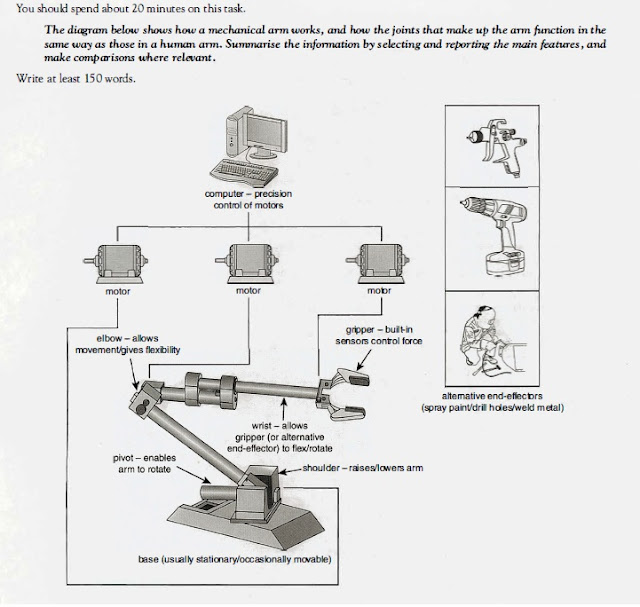The diagram below shows how a mechanical arm works, and how the joints that make up the arm function in the same way as those in a human arm. Summarize the information by selecting and reporting the main features, and make comparisons where relevant
The given diagram
elucidates how a robotic arm works in a similar fashion to a human arm while
performing tasks such as spray painting, drilling and welding.
Overall, a mechanical
arm is controlled by three computer monitored motors and has joints similar
to a human arm.
The
elbow in the middle allows free movement including flexing and rotating,
affording complete flexibility to the whole equipment. Similarly, the
wrist of the mechanical arm functions just like a human counterpart allowing
hand free movement, gripper in this case. Gripper is equipped with
sensors to control force of hold. Gripper can be replaced by other
end-effectors: spray paint, drilling and welding metals.















